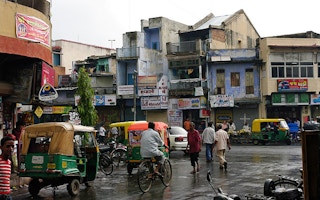The rejuvenation of large, decaying areas in the fast-growing cities of the developing world cannot be achieved by governments alone and private sector participation is paramount, the World Bank said in a report on Wednesday.
The report, released during the World Cities Summit in Singapore, looked at eight major cities that have brought new life to abandoned and run-down areas and found most successful regeneration projects do not rely solely on public funds.
“There is a need for massive financial resources that most cities can’t meet,” said Ede Ijjasz-Vasquez, senior director for the World Bank’s Social, Urban, Rural and Resilience Global Practice.
“Participation from the private sector is a critical factor in determining whether a regeneration programme is successful - programmes that create urban areas where citizens can live, work, and thrive.”
The report studied projects to revitalise areas of Ahmedabad in western India, Santiago in Chile, as well as in Buenos Aires, Johannesburg, Singapore, Seoul, Shanghai and Washington DC. It was produced by the World Bank with the Public Private Infrastructure Advisory Facility (PPIAF).
All the projects were in inner city areas and targeted former industrial or commercial sites, as well as ports, waterfronts and historic neighbourhoods.
“
Participation from the private sector is a critical factor in determining whether a regeneration programme is successful - programmes that create urban areas where citizens can live, work, and thrive.
Ede Ijjasz-Vasquez, senior director, Social, Urban, Rural and Resilience Global Practice, World Bank
Santiago to Ahmedabad
While the areas chosen - and the reasons for their decline - varied widely, the most successful projects all benefited from significant private sector input along with state planning and funding support, the World Bank said.
It noted that in developing countries, which absorb 90 per cent of the world’s urban population growth, cities are becoming home to a growing number of poor and vulnerable residents who create huge informal settlements - slums - but have no security of tenure or formal ownership.
Increasingly, slum residents are marginalised and excluded.
The report documents the measures taken by planners in the eight cities to revitalise decaying areas, documenting the challenges faced and which solutions were successful.
For example, the Chilean city of Santiago lost almost 50 per cent of its population and 33 per cent of its housing stock between 1950 and 1990, the report said.
But the city has turned the crisis around by using a national housing subsidy to fund an initiative to repopulate the inner city. Private investment reached $3 billion over the course of the project, stimulated by a $138 million subsidy.
In Ahmedabad, the closure of mills on the Sabarmati riverfront created widespread unemployment and former workers set up informal settlements along the riverbed, creating unsafe and unclean living areas and reducing capacity to manage floods.
However, the city created a development corporation that reclaimed 200 hectares of land on the riverfront on both sides, funding the costs of the project with the sale of about 15 per cent of the reclaimed riverfront area.
The rest of the foreshores were transformed into public parks and workers were re-settled through a housing programme.
Acknowledging there is no “one-size-fits-all” approach for cities seeking to address urban decay and noting the need for strong political leadership, the report highlighted the importance of well-enforced zoning and property tax systems.
Rana Amirtahmasebi, urban planner and author of the report, said no two cities are alike, so the World Bank has created an online decision tool based on the specific issues the city faces and its current regulatory and financial environment.
“Local governments can use the information curated in this report to begin to reverse the process of economic, social, and physical decay in urban areas, moving toward the sustainable, inclusive development of their cities,” Amirtahmasebi said.
This story is published with permission from Thomson Reuters Foundation, the charitable arm of Thomson Reuters, that covers humanitarian news, women’s rights, trafficking, property rights and climate change. Visit news.trust.org

















